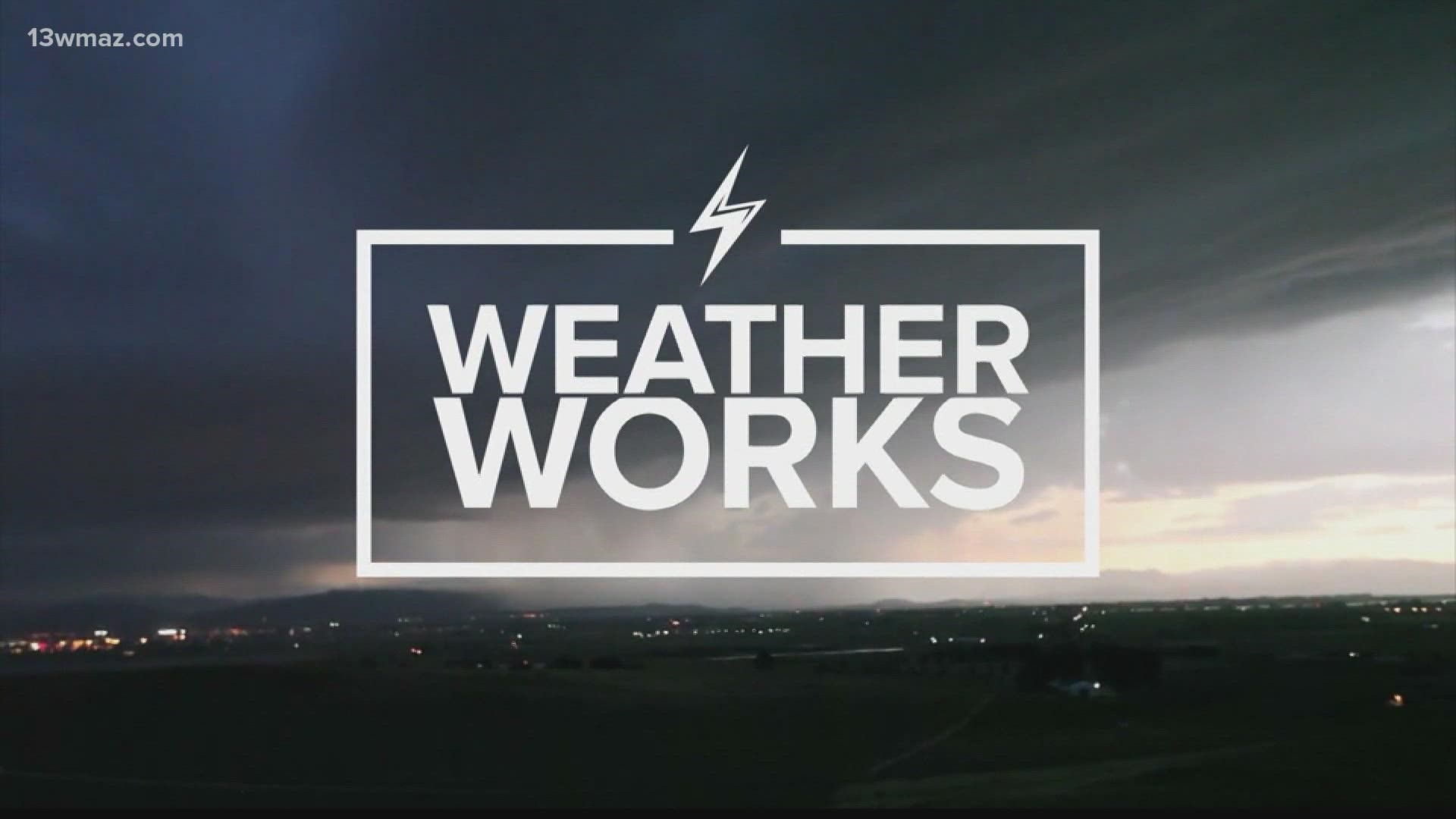MACON, Ga. — Hail is one of those fascinating impacts from severe storms that can be cool, but can also be very damaging to your property.
For hail to form, a storm needs strong updrafts. An updraft is just air that rushes up into a cloud during a storm.
The updraft picks up water droplets in its stream and pushes that water to cold heights. The water then freezes and becomes the beginnings of a hail stone.
Hail stones grow through accretion, which is just a fancy word for ice building on top of ice. The stronger the updraft, the more that hail can grow.
When hail gets too heavy to be carried by the updraft, it falls to the ground. Sometimes, on very warm days, when hail reaches the ground, it melts on contact so you may not even get the chance to see the stones.
Some hail stones are so big though, they're easy to spot and heavy to pick up.
The largest hail ever recorded fell in July 2010 in South Dakota. The stone measured at about 8 inches in diameter and weighed almost two pounds! Hail that large can cause significant damage.
To protect your car from hail during severe weather, park it in the garage or cover it with a hail tarp.
That's how your weather works!
MORE WEATHER WORKS HEADLINES

